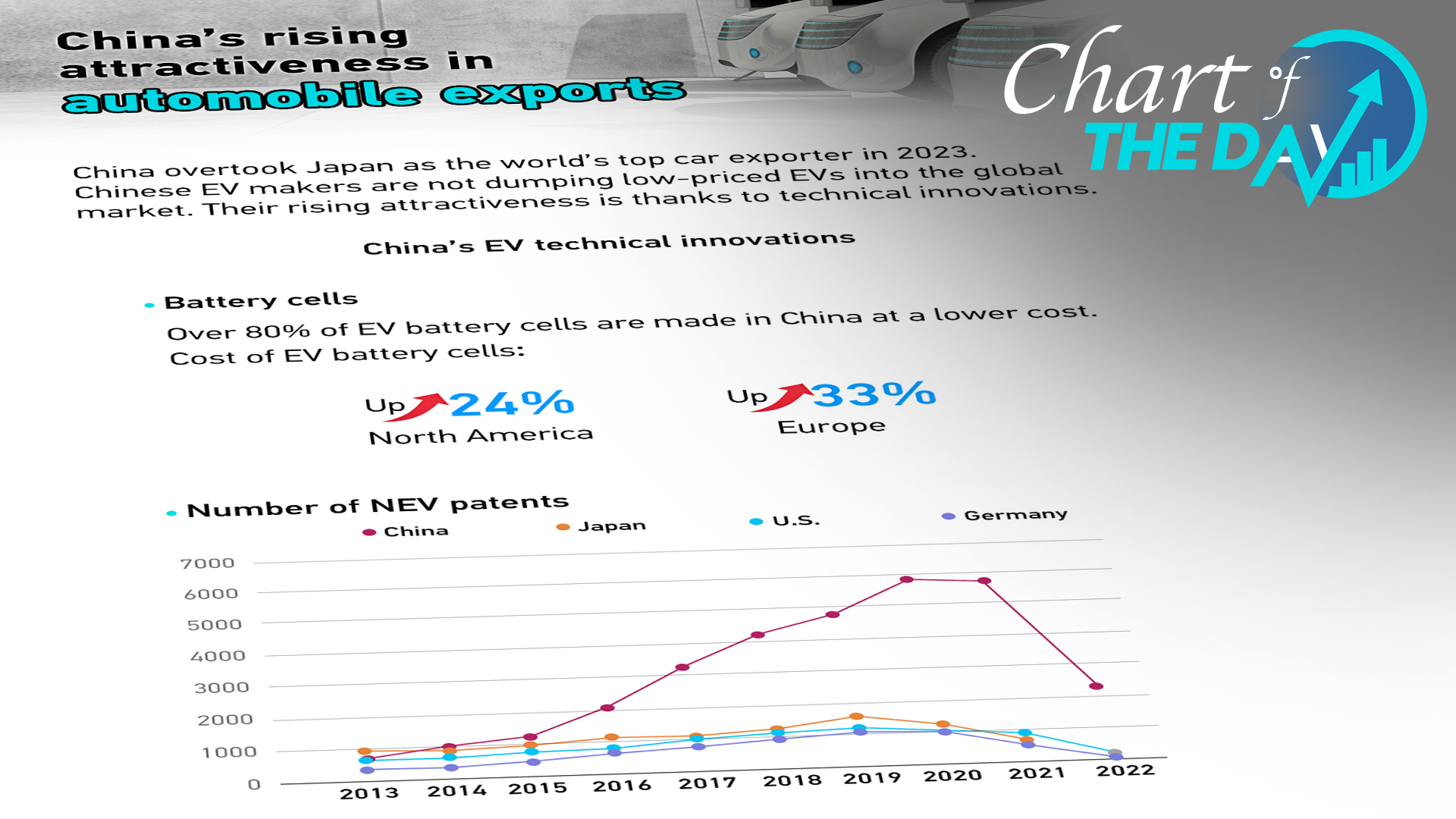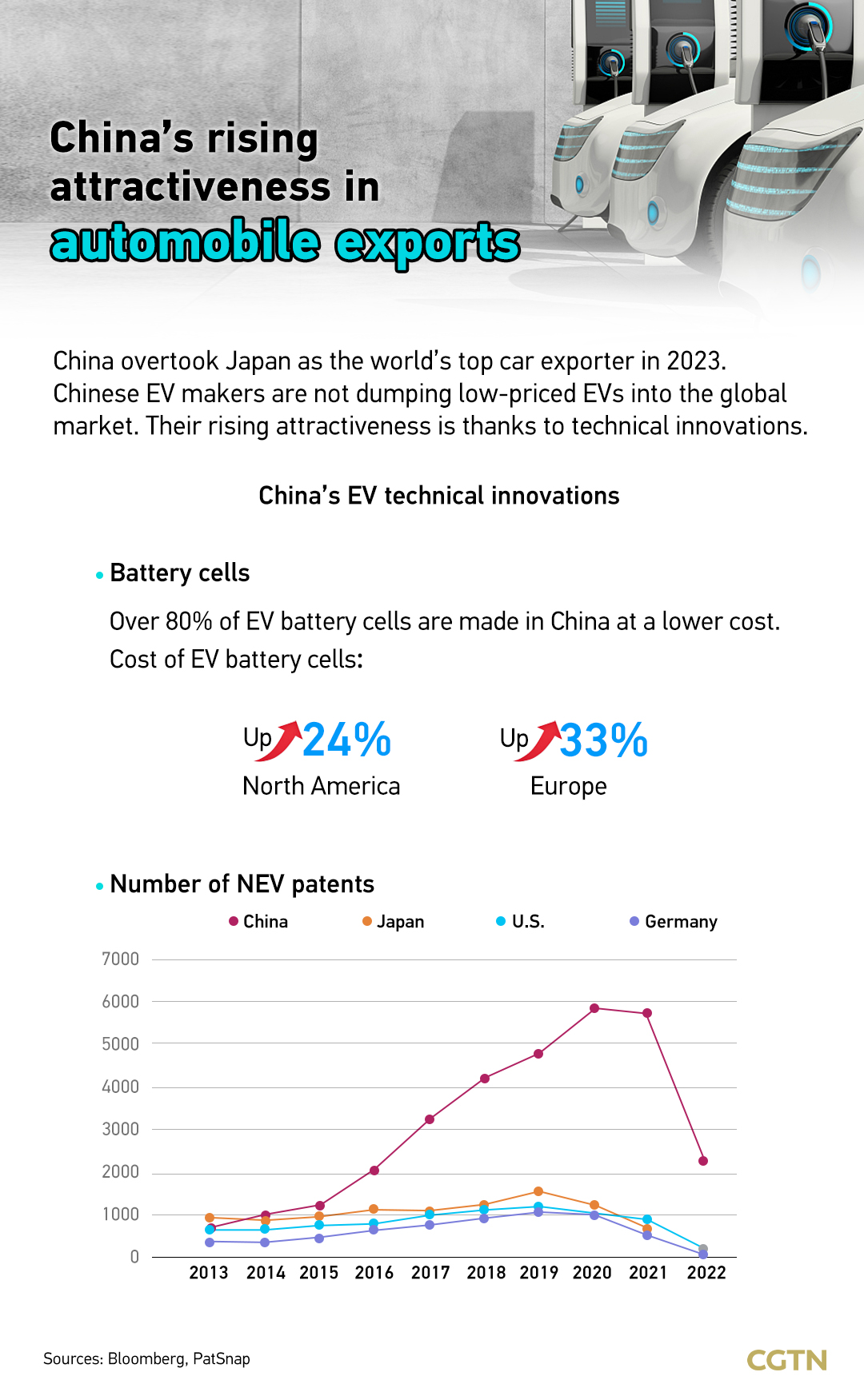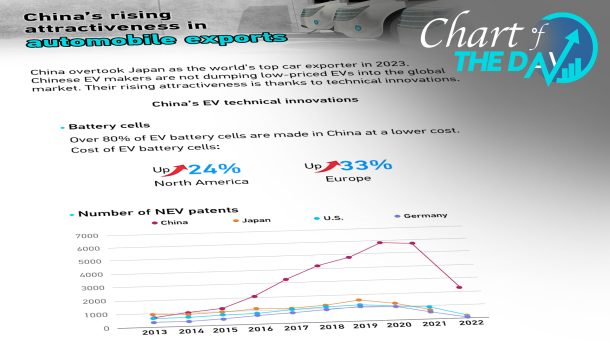
Editor’s note:
China is home to over half of the world’s electric vehicles (EVs), leading the global market in new energy vehicle production and sales with more than a 60 percent share in 2023 – its ninth consecutive year at the top. What propelled China to this position, and how will it continue to drive innovation and scale up its achievements in the EV sector? What factors contribute to the advantageous position of China’s power battery development?
As the world shifts toward sustainable transportation, China has become a major participant in the electric vehicle (EV) revolution. Its production and sales of new energy vehicles account for more than 60 percent of the global total, maintaining the top position for nine consecutive years, according to the Development Research Center of the State Council.
China’s prominence in the global EV market plays a pivotal role in advancing its power battery sector. In 2023, its power battery exports surged to 127.4 gigawatt hours (GWh), marking an 87.1 percent increase and securing a top global market position for the seventh year, according to the Ministry of Industry and Information Technology. With Europe, the U.S. and Southeast Asia as the primary markets, Chinese firms notably occupy six of the top 10 positions globally in terms of vehicle power battery installation volume.
Industry advantages and international collaboration
China’s prominent role in the EV market stems from a strategic focus on battery technology, according to an analysis by the Harvard Business Review. This strategy involves utilizing access to vital raw materials like rare earth elements and forming strong partnerships. This strategic approach has led China to become a pivotal supplier, accounting for over 80 percent of the global shipments of essential components, including lithium battery electrolytes and separators in 2023.

China’s power batteries offer unparalleled industrial advantages, said Cui Dongshu, secretary-general of the China Passenger Car Association, to China Media Group (CMG). The country’s self-sufficiency in crucial raw materials for power battery production, including cathode and anode materials and electrolytes, has established a comprehensive power battery industry chain.
The robust industry framework underpinned the rapid growth of China’s lithium-ion battery sector in 2023. According to the Ministry of Industry and Information Technology, the sector’s output exceeded 940 GWh, marking a 25 percent increase from the previous year, with its value surpassing 1.4 trillion yuan (about $197 billion). Moreover, exports of lithium-ion batteries in 2023 witnessed a significant surge, increasing by over 33 percent from the previous year to reach 457.4 billion yuan.
Tesla’s Vice President, Tao Lin, told CMG that Tesla, as China’s first entirely foreign-owned vehicle company, benefits greatly from the nation’s robust and comprehensive supply chain. “Over the past decade, Tesla’s collaboration with local Chinese firms has contributed to the growth of China’s automotive industry and global economic integration. Tesla’s achievements in China largely reflect the strength of the Chinese supply chain,” she said.
Crucially, long-term commitment to technological innovation and rapid globalization are central to the development of China’s EV sector. Data from the China Association of Automobile Manufacturers indicate that China holds 74 percent of the global power battery patent applications, establishing it as the top producer of drive motors.
Chinese battery products, known for their stable quality and competitive pricing, are favored by international car manufacturers. In 2020, Volkswagen became the first foreign car company to invest directly in a Chinese battery manufacturer.
The company’s strategy aims to reduce the battery costs of its globally mass-produced models by 30 percent by 2030, with a 50 percent cost reduction for entry-level models. A representative from Volkswagen told CMG that deep collaboration with Chinese battery firms is streamlining their cost structure and poised to significantly boost their competitiveness in the battery domain.



